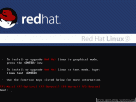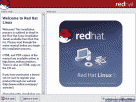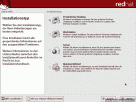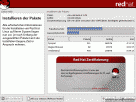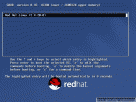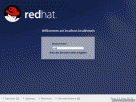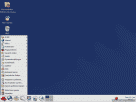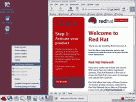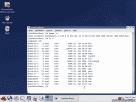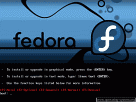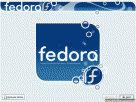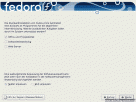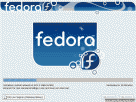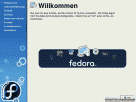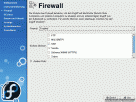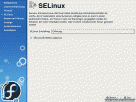505 words [ 20 Screenshots ] [ 33 Versions ] [ 3 Weblinks ] - Last update: 2023-12-22 Page created: 2007-02-26 [SB]
Red Hat
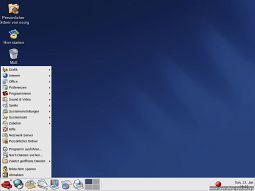 The company Red Hat with company headquarters in the USA North Carolina was founded 1994 by Bob Young and Marc Ewing. From the beginning the open source operating system has played a high role for the enterprise concept. The field of application reached from miniature devices over work stations up to server systems on Intel x86, Dec alpha and Sun SPARC systems. One strengthens of Red Hat Linux is the application in InterNet and Intranet. Extensive support, training and training offers as well as the broad support of IT companies carry to the growth of Red Hat constantly. Red Hat reached with his Linux distribution about 15 % by the gross income, a majority income is realized by competent services like the Redhat network - RHN. With the software package format RPM, Red Hat has set a standard which many distributions followed.
The company Red Hat with company headquarters in the USA North Carolina was founded 1994 by Bob Young and Marc Ewing. From the beginning the open source operating system has played a high role for the enterprise concept. The field of application reached from miniature devices over work stations up to server systems on Intel x86, Dec alpha and Sun SPARC systems. One strengthens of Red Hat Linux is the application in InterNet and Intranet. Extensive support, training and training offers as well as the broad support of IT companies carry to the growth of Red Hat constantly. Red Hat reached with his Linux distribution about 15 % by the gross income, a majority income is realized by competent services like the Redhat network - RHN. With the software package format RPM, Red Hat has set a standard which many distributions followed.
1998: Partnerships with Intel and Netscape
1999: Partnerships with SAP, Oracle, IBM, Compaq, Dell and Novell
The Fedora project is one of Red Hat approved Consumer version of the Linux distribution Red Hat Linux. This open source project is sponsored by Red Hat, but lies independently in administration of the Linux Community. In May 2004 the Fedora core 2 for the x86-64 and i386 architecture was published, used the Linux Kernel 2.6, the new X-server of X.org and the extended access protection SELinux in the Kernel.
With the new Fedora Linux core 4 the contained software was brought up to date. GCC 4.0, gnomes 2.10, KDE 3.4, OpenOffice 2.0 beta, the development environment Eclipse 3.1 and the universal document viewer Evince 0.2.1 belongs to this software now. Beside the x86 32-Bit and x86 64-Bit architecture is now Fedora also installable on power PC systems. The global file system (GFS) in version 6.1 is used for Cluster systems, Xen 2 creates a virtual environment for guest systems. For the minimum installation are 620 MByte up to 7 GByte (everything to install) free storage space needed. Fedora Linux Core 5 contains new graphic tools for the software management, the GNOME 2.14 and KDE 3.5 desktop and the standard Web browser Firefox 1.5. The Linux Kernel is updated on version 2.6.16, Apache Server 2.2, X.org X11R7.0, GCC 4.1 and SELinux were revised.
The printing system was completely revised in Fedora Linux Core 6 and based on CUPS 1.2. Fedora Core 6 builds the basis for Red Hat Enterprise Linux 5 (RHEL). This release is without any commercial software like Java, NTFS support, flash, MP3 codec and DVD software player for encoded DVDs. Graphic drivers of ATI and Nvidia are also missing. The software was updated, for the installation the X server X.org 7.1, GNOME 2.16, KDE 3.5.4, Firefox 1.5.0.6, Thunderbird 1.5.0.5, OpenOffice.org 2.0.4, Apache web server 2.2.3, MySQL 5.0.22, PHP 5.1.6 and the free .Net implementation Mono 1.1.17.1 can be selected.
In February 2006 the Red Hat Enterprise Linux (RHEL) version 4 operating system was certified for safety according to the Common-Criteria EAL4+.
CentOS, the Community ENTerprise Operating System, is based on Red Hat Enterprise Linux (RHEL) operating system and is a liberal and free alternative to RHEL. Contained are the gnome and KDE desktop.
Date - Version
1995 - Red Hat Linux 1.0 (mother's day), kernel ?1995 - Red Hat Linux 2.0 (?), kernel ?1996 May - Red Hat Linux 3.0.3 (picasso), kernel 1.21996 Oct. - Red Hat Linux 4.0 (colgate), kernel ?1997 April - Red Hat Linux 4.2 (biltmore), kernel 2.0.301997 Nov. - Red Hat Linux 5.0 (hurricane), kernel 2.0.321998 May - Red Hat Linux 5.1 (manhattan), kernel 2.0.341998 Oct. - Red Hat Linux 5.2 (apollo), kernel 2.0.361999 April - Red Hat Linux 6.0 (hedwig), kernel 2.2.51999 Sep. - Red Hat Linux 6.1 (cartman), kernel 2.2.122000 March - Red Hat Linux 6.2 (zoot), kernel 2.2.142000 Aug. - Red Hat Linux 7.0 (guiness), kernel 2.2.162001 April - Red Hat Linux 7.1 (seawolf), kernel 2.4.22001 Oct. - Red Hat Linux 7.2 (enigma), kernel 2.4.72002 May - Red Hat Linux 7.3 (vallhalla), kernel 2.4.18, ext32002 Sept. - Red Hat Linux 8.0 (psyche), gcc 3.2, kernel 2.4.182003 April - Red Hat Linux 9.0 (shrike), gcc 3.2.1, kernel 2.4.202003 Nov. - Fedora Linux Core 12004 May - Fedora Linux Core 22004 Nov. - Fedora Linux Core 32005 June - Fedora Linux Core 4, kernel 2.6.92006 March - Fedora Linux Core 52006 Oct. - Fedora Linux Core 62007 May - Fedora Linux Core 72007 Nov. - Fedora Linux Core 82008 May - Fedora Linux Core 92005 Jan. - CentOS 3.42006 March - CentOS 4.02006 March - CentOS 4.32007 Dec. - CentOS 4.62008 Sept. - CentOS 4.7, based on open source code of RHEL 4.72007 Dec. - CentOS 5.12008 June - CentOS 5.2, based on open source code of RHEL 5.2
